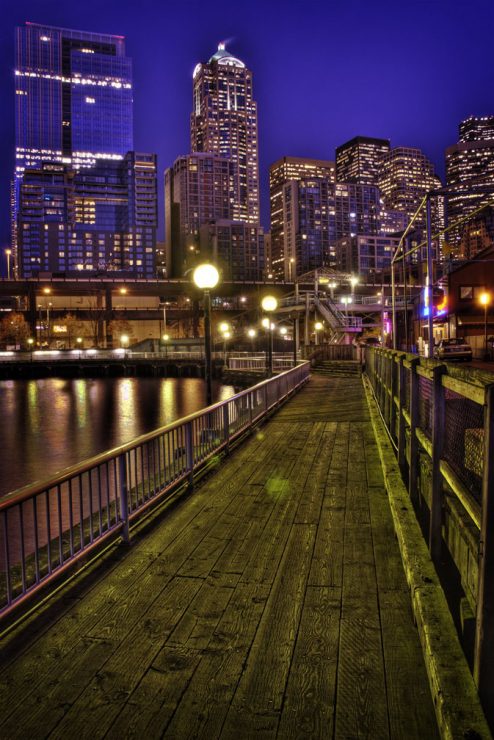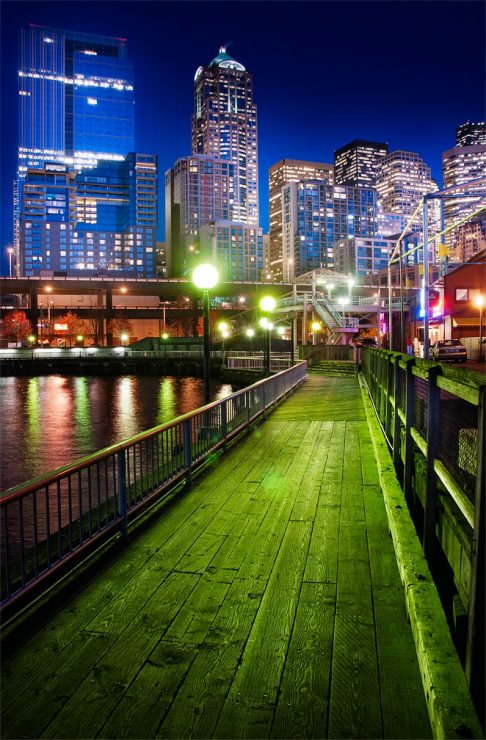
I suppose that a lot of people are already really tired of HDR, and I admit that I have been too. When HDR techniques are used conspicuously, the resulting style is very distinctive but, consequently, also cliche. These days, when I use HDR, it is only when I need to use it subtly to bring in some extra shadow detail or reign in the highlights.
And then I a cousin of mine told me about Stuck In Customs, a blog of travel photography that is, as far as I can tell, entirely done with HDR. Some of the photos are predictably cheesy. Others, though, were pretty impressive, and I thought that I’d better do a little more experimentation with HDR myself. And so, I found myself on the Seattle waterfront last evening with a tripod and cable release, looking for scenes with high dynamic range… which, at night, was just about everything.
I framed this image thinking that I might be able to get the highlight details from the dock lights and building windows and still hold the shadow detail from the boardwalk and surrounding area. I took 5 exposures, ranging from so dark that no highlights were blown (almost black other than the lights) to so light that about 1/3 of the image was flashing as blown out on my camera back. My camera unfortunately only auto-brackets 3 exposures up to 2 stops, which wasn’t enough in this case, so I did it manually by adjusting the shutter speed (adjusting the aperture would change the depth of field/apparent focus between shots).

When I started tone-mapping them with Photomatix (stand-alone), I found that although it was very easy to bring in the shadow detail, it was tricky to get the highlight detail without the entire image looking like a fantasy/video game scene. I eventually found what I thought was a happy medium… not too crazy on the fantasy side, but with better highlight detail than the “correct” exposure, and much better shadow detail. I saved it off and moved on to other projects.
And then I came back this morning and took a look at it and realized that it was exactly what I was trying to avoid. It looks like an HDR. I was also curious how it would compare if I simply opened a few of the photos in Photoshop CS4 as separate layers and combined them with masks. The result is also here.
In the end, I’ve concluded that what I really need to do is learn how to get the results that I want from Photomatix. I’ve seen that it’s possible, so I imagine that it’s going to take some trial and error and I’ll be able to get all of the tonal range that I want. I’m also guessing that to get better looking highlights, I may need to take several intermediate steps between the correct exposure and the under-exposure for highlight detail. More experimentation to come.



